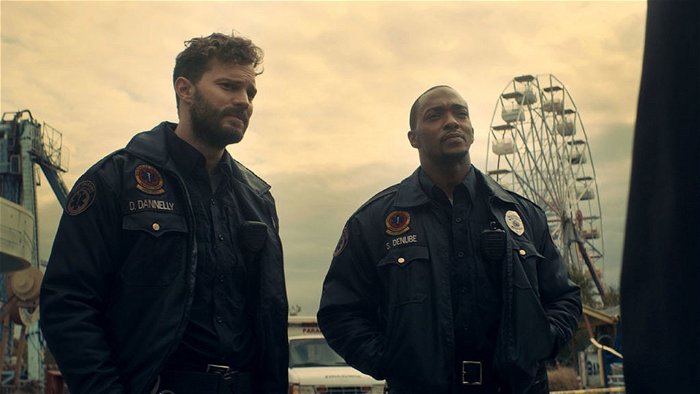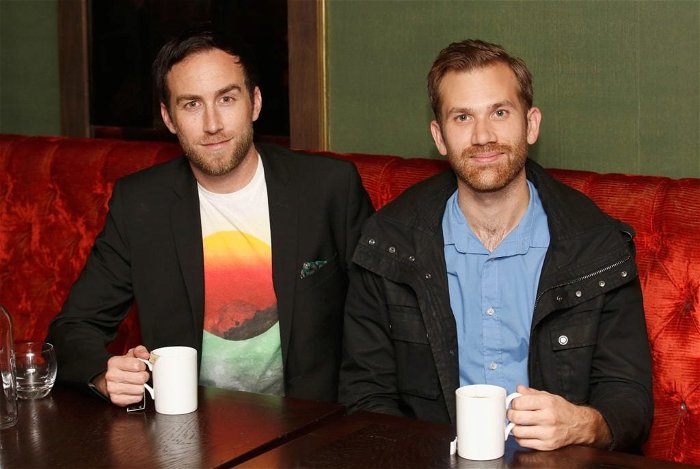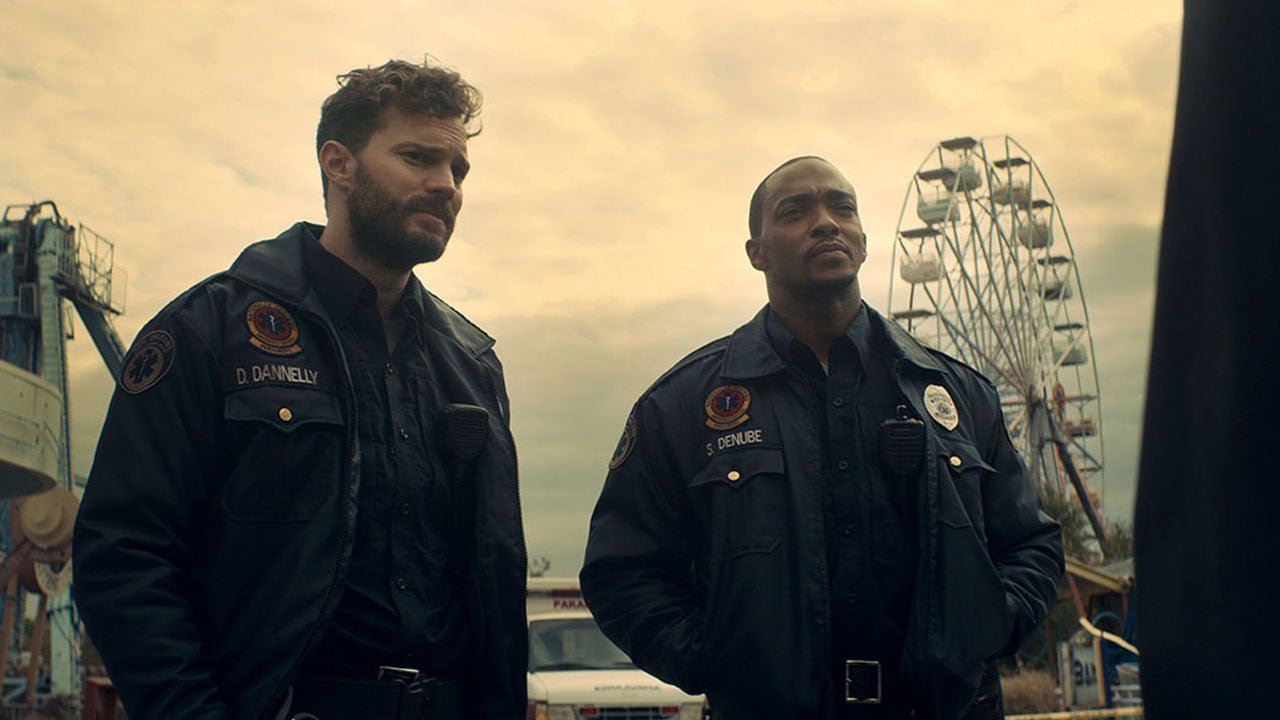Aaron Moorhead and Justin Benson have built a name for themselves with their body of work.
Their unique take on the science fiction and horror genres goes beyond typical genre filmmaking, forcing their audience to ponder deeper questions about reality, humanity, and existence as they are taken on a visual journey.
Their latest film, Synchronic, blends genres in a way rarely seen by mixing time-travel, horror, and science fiction with a unique blend of humour while maintaining the human connection often lost in films like this. The human connection and direction ground the film, elevating what could be a fun but simple science fiction story into something filled with dread and mystery that is truly engrossing. Aaron Moorhead and Justin Benson mix striking, often mind-mending visuals with a tone that keeps you on the edge of your seat throughout. Synchronic needs to be seen to be fully appreciated, as it is filled with stunning visuals and sublime acting, all crafted impeccably into one of the most interesting films out of TIFF 2019.
While at TIFF, CGMagazine got the chance to speak with the film-making team to discuss their latest film. Sitting on a roof in downtown Toronto, Aaron Moorhead and Justin Benson dove into the origins of Synchronic and discussed how all the pieces came together to make the film that had its premiere during the festival.

CGMagazine: The movie has duality at play; on the one hand, you have a dread-filled early segment, but then the second half becomes more of an adventure. How did that structure come to be, and was that always how it was intended when going into production?
Aaron Moorhead: Yeah, that was part of the original conception of the film. Structurally we have a film with three acts. However, tonally, we have something that should feel like the monolith scene from 2001: A Space Odyssey, and just palpable dread where you know something is coming, which is how we basically all feel every day, no matter how optimistic you are. Then once the pin drops, and the mystery is revealed, we lean into the, I guess, “thriller” component of it, and it feels more like a very dark Saving Private Ryan. But yeah, it was part of the design that we wanted to have a regular three-act structure because it’s just a regular movie, but make sure that the first half is dread-filled with the second half being the payoff from that tension.
CGMagazine: I want to quickly touch on the believability of the world and the actors in that world. The film does a great job of capturing this mystery by its structure, how did you achieve this from a production point of view?
Aaron Moorhead: One of the ways that we had discussed in the very beginning of, “How do we clue the audience into the fact that there is a
mystery without having the protagonists get all up in arms immediately about this thing they should panic about?” And what it is, is we have a living camera, the camera always knows that something’s wrong. That helps if you were to re-watch it with that in mind, the camera seems to always know how to find the thing that’s wrong with the scene. Whereas if you’re a paramedic, you’re walking into the weirdest situations all day, every day.
Justin Benson: You know Anthony and Jamie have the task in the first half of the movie of giving the audience some pretty complicated information from physics, chemistry, and laws in order to get to that point where he finally takes Synchronic and learns exactly what it is. Our movies are pretty naturalistic and to believe in that in a naturalistic sense you’ve got to give a lot of information relayed to the audience without them feeling like it’s being delivered to them. I think those guys did that really, really well. Every actor in the movie did that very, very well.
Aaron Moorhead: You know what’s funny is there’s even more exposition that we shot, just to make sure if we were in the edit stage and not nailing something that we could have something to lean on. But the actors say all of that with looks and object gaze so we were able to trim all that back.
CGMagazine: The film felt very believable, with some scenes giving the impression the actors were seeing this information for the first time.
Aaron Moorhead: Yeah, I think that’s that is actually just a testament to them, because they have the instinct for mystery. A lot of the time, one of the operative words we used when directing them is that the scene is “haunted”. That actually helped slowed them down a little bit, had them give a little bit more thought to the reaction rather than what they were saying. And then we did all of what we just said in the editing as well.
CGMagazine: Why the choice of a paramedic as the profession for the protagonists?
Aaron Moorhead: The idea of Synchronic came first—the idea of the effects of the pill. Then we talked about the mechanic for being able to uncover what’s happening. The first thing that came to mind was that the easy choice would be cops. But we don’t want to empower them to figure this out. If it’s a cop, it’s literally their job, and they have a badge that can get them any answer they want from anyone, and they have a gun where they can force information out of anyone, and they’re always protected. They’re the most powerful person in any situation. So we wanted our characters to start out in a very disadvantaged position while still being lovable protagonists. Who can dislike a paramedic? They are lifesavers. Especially one that’s dealing with his own death, even though he sees death every single day. So that was really how we arrived on it.
CGMagazine: I wanted to touch on the theme of time. It seems to be a topic you have brought up before in your library of work. What drew you to tackle time this way within Synchronic?
Justin Benson: I guess because time is obviously the countdown to death. As depressing as that sounds, it’s true. And a lot of the best storytelling is providing an audience comfort about death. Sometimes that’s denying it, and giving them wish fulfillment that it’s not going to happen. Vampires are kind of that wish fulfillment about cheating time and death. But this movie is about the clock and the fact it is always ticking down. “I appreciate the now because it won’t always be here. But don’t worry about death so much because there are so many worse things.”

CGMagazine: I wanted to ask about the choice to make the main character African American, and how he deals with the past. Was this always the plan for Synchronic, and how did that choice come to be?
Aaron Moorhead: So I said earlier, the conception of the movie first was coming up with the effects of the pill. But we were here in Toronto at some bar that had Back to the Future on. We love Back To The Future and have watched it a million times. While at the bar we were just joking about the fact that it only works because of the fact that the main character is white. And then we realized, that’s funny, but also like, that’s sad and dark and very scary. We can joke about it because we are coming from that privileged position. But you realize that no, it’s actually frightening if you are not, and so we dove into that idea as it dovetailed with the idea of going into that past.
CGMagazine: Know On that note, Synchronic is filled with foreboding and tense moments, but it’s also very funny at times. How did you balance that dichotomy?
Justin Benson: I mean, that’s like the one the toughest thing—in the edit actually there’s even funnier stuff than that. But then you wonder if you’re starting to violate the tone. You still want to get people to the roller coaster ride of being afraid and full of dread. And sometimes, even though a joke makes you laugh in the room, holistically, you may have taken the real roller coaster ride that was feeling afraid. We will never make a movie that’s totally humourless, but it’s always about putting the levity in the right spots so that it feels human. As much as we all love Anchorman, those jokes probably wouldn’t belong in our movies.
CGMagazine: How did you select Anthony Mackie and Jamie Dornan for the main protagonists in Synchronic?
Aaron Moorhead: We’ve been struggling to get big-name talent attached to our scripts. And this one agent named Houston Costa saw The Endless and went wild for it. He reps Jamie Dornan and we’ve seen The Fall and loved what he did, and said he would be amazing in this role. And then the agency let us know who else has been wanting to work with Jamie and we looked at Anthony basically and just said he’s perfect for this kind of role. His work in The Hurt Locker was amazing, it is a shame he didn’t get the Oscar for it.
To read the full, unedited interview pick up issue #38 of CGMagazine




